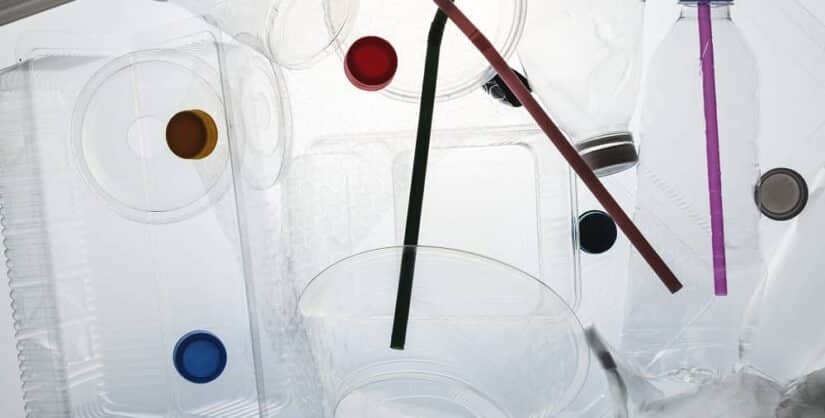What is it and how does it affect you?
The plastic tax shall apply from 1 January 2023.. It is designed to promote the circular economy and reduce the amount of single-use plastics.
Aim of the new plastic tax
This new excise duty on non-reusable plastic packaging is driven by the new Law 7/22 on Waste and Contaminated Soil (LRSC). The objectiveis that in 2026 the weight of single-use plastic generated has been reduced to 50% and to reach a reduction of 70% by 2030.
What does this new tax levy?
The new tax taxes non-reusable plastic packaging:
- Primary packaging: individual formats containing foodstuffs or products of any kind (bags, bottles, caps, etc.)
- Secondary packaging: grouping of individual formats, such as a shrink pack, plastic rings holding e.g. a pack of cans, etc.
- Tertiary packaging: for shrink wrapping of pallets, strapping, etc.
How much will I have to pay?
The calculation of what will be paid with this new tax is calculated by kilo of non-recycled plastic contained in the container. Specifically, the tax rate is 0,45 € per kg of plastic.
Who will have to pay the new plastic tax?
The tax is paid only once, and is the responsibility of the person who first introduces the film to the Spanish market. Therefore, they will be:
- Manufacturers film manufacturers in the Spanish territory (PE, OPP, PET, etc.)
- Converters (as IFLEX)
- Legal persons or companies introducing plastics into Spaineither byintra-community acquisition (European Union) or by import from countries outside the EU.
How is the quantity of RECYCLED plastic contained in a product within the target scope of the tax credited when it is imported?
According to the Article 77(3) of Law 7/2022 of 8 April 2002 on waste and contaminated land for a circular economy:
"(...) the amount of recycled plastic contained in the products falling within the target scope of the tax must be certified by a body accredited to issue certification under the UNE-EN 15343:2008 standard.
In the event of chemically recycled plasticThe amount shall be credited against the certificate issued by the relevant accredited or licensed body for this purpose.
The certifier bodies must be accredited by the National Accreditation Body (ENAC) or by the national agency accreditation from any other Member State of the European Union.
In the case of products manufactured outside the European Union,any other accreditor with whom the National Accreditation Body ENAC has an international recognition agreement"..
However, the aboveaccording to the tenth transitional provision of Law 7/2022:
"During the first 12 months following the application of the taxalternatively to the provisions of Article 77(3) of this Law, the quantity of recycled plastic can be credited contained in the products falling within the target scope of the tax by means of a declaration of liability signed by the manufacturer.".
How is the quantity of NON RECYCLED plastic contained in a product that is part of the target scope of the tax credited when it is an importer?
The amount of non-recycled plastic contained in the products falling within the target scope of the tax must be certified in a commercial document; invoice or packing list.
Exemptions and Refunds
Please note that the law foresees some cases in which the use of plastic in packaging is exempted from this tax. This would be the case for:
- The medicine containersmedical devices, medical devices, foodstuffs for special medical purposes, infant formulae for hospital use or hazardous waste of medical origin.
- Products to be or having been shipped outside Spanish territory.
• Productos the import or intra-Community acquisition of which does not exceed 5 kg from total weight made of non-recycled plastic.
- Products that have been object of return for destruction or reincorporation into the manufacturing process.
- WasteA certificate of destruction (from the waste manager) will be required in order to be able to claim the return.
What are the alternatives for a company to reduce the amount of tax?
This new tax burden, which is in the framework of the Law 7/22 on Waste and Contaminated Soil (LRSC), will mean a significant financial outlay for companies in the sector.
The future lies in adapt y reduce the amount of plastic if possible.
Depending on the product to be packaged, required barrier properties, machinability and other variables, the IFLEX technical department will study your case individually and propose solutions to reduce the impact of the tax.
What are my possible solutions?
Each case is different and it is necessary to study it well in order to find the best solution.. But, in general, some of the alternatives that you can apply are:
- Replacement of plastic packaging component by other materials
- Micron reduction / packaging weight
- Replacement of some foils with lighter thermoplastics
- Use of PCR (post-consumer recycled) material), in so far as permitted by food law.
These are some examples of the measures we can help you to take. But each case is different and, as we have already seen, the feasibility of these changes must be studied in detail in each specific case.
You can find more information in the following link.


